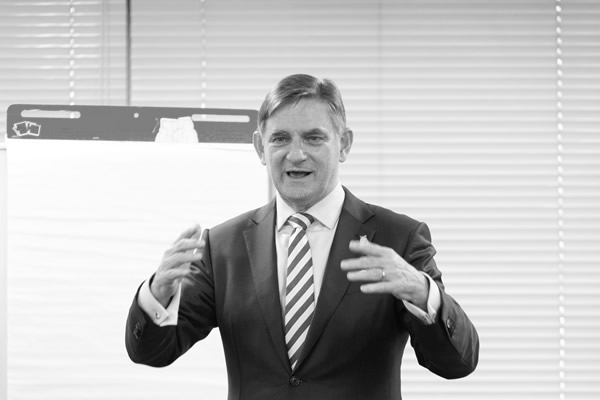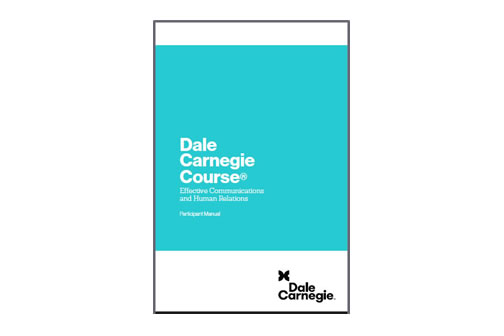Yukinaga “Frank” Mochizuki: Father Of Dale Carnegie Training In Japan
Yukinaga “Frank” Mochizuki met Dale Carnegie in 1939, just before the Pacific War started and eventually would bring Dale Carnegie Training to Japan. Born in 1928, his family were farmers from Gokaimura in the Kajikazawa area in Yamanashi prefecture. His father died when he was ten, so like Dale Carnegie he knew what it was like to suffer rural poverty. Despite his humble background he went to the highly prestigious Keio University in Tokyo and after graduation studied hotel management for a year at the YMCA and then went to work at the Nagaragawa Hotel in Gifu Prefecture. In 1939, while still a student at Keio University, Mochizuki was asked by Professor Roland Eastlake to become Dale Carnegie's interpreter, after the originally arranged translator dropped out. Mochizuki had been a very keen student of English and he accompanied Dale Carnegie throughout his visit in Japan.
During the war, Mochizuki was conscripted and sent to Hong Kong (1942-45) to be the Deputy-General Manager of the Peninsular Hotel. He repatriated himself back to a devastated Japan at the end of the war. Because of his English ability he got a job working as an interpreter and Assistant Manager at the Manpei Hotel in Karuizawa which at that time was being run by the American Military Eighth Army . These connections proved to be very valuable, as this gave him access to people prepared to assist him in his desire to study in the US.
In 1950 Mochizuki and his wife Fumi went to the United States, where he studied hotel operation and tourism at the Phoenix College in Arizona as well as at Michigan State University (he was the first Japanese to receive a degree in Hotel Administration from Michigan ). Upon completion of his studies in 1954, he was invited by the Hilton Hotels to study their management system. The Hilton chain were planning constructing a new hotel in Tokyo at that time and so were open to having a Japanese graduate join the company . This enabled Mochizuki to get that all important work visa to stay in America.
He noted, “While I was at Palmer House, I suddenly noticed that Hilton officials were outstanding in leadership, especially in their handling of subordinates and customers, of course. Upon asking the reason, I discovered that many of them were graduates of the Dale Carnegie course. Before I entered the course, I never thought I would be able to deliver a speech in front of American people because of my borrowed language. But by the fifth session, I was completely changed”.
“At that time I felt I really had a mission to plant the seed of Dale Carnegie in the soil of Japan so that Japanese people could think on their feet and express themselves, especially to people of other countries”.
In 1962-63 Dale Carnegie Training was launched in Japan with Edwin “Whit” Whitlow, from Hawaii. Whitlow became the Sponsor for Dale Carnegie in 1948 for Hawaii. Being a far sighted businessman, he approached Dale Carnegie’s widow Dorothy, who had been running the organization since 1951, with the proposition to open up Dale Carnegie further throughout Asia, eventually sponsoring Japan, Hong Kong and the Pacific.
Whitlow and Mochizuki together launched Dale Carnegie in Japan. Whitlow received the license for sponsorship in Japan in October 1962. Whitlow would fly to Japan from Hawaii and spend a number of weeks each time, conducting classes and mentoring Mochizuki. Whitlow acted as a strong supporter for Frank Mochizuki who was an Associate Sponsor until he could take over the running of Dale Carnegie in Japan by himself.
Frank Mochizuki decided that the best strategy to see Dale Carnegie Training succeed in Japan was to make it exclusive and only available to the most prestigious companies .
One of the training rooms currently in Akasaka is called the "Mochizuki-Room" following his intention and has produced breakthroughs for many individuals.
During the war, Mochizuki was conscripted and sent to Hong Kong (1942-45) to be the Deputy-General Manager of the Peninsular Hotel. He repatriated himself back to a devastated Japan at the end of the war. Because of his English ability he got a job working as an interpreter and Assistant Manager at the Manpei Hotel in Karuizawa which at that time was being run by the American Military Eighth Army . These connections proved to be very valuable, as this gave him access to people prepared to assist him in his desire to study in the US.
In 1950 Mochizuki and his wife Fumi went to the United States, where he studied hotel operation and tourism at the Phoenix College in Arizona as well as at Michigan State University (he was the first Japanese to receive a degree in Hotel Administration from Michigan ). Upon completion of his studies in 1954, he was invited by the Hilton Hotels to study their management system. The Hilton chain were planning constructing a new hotel in Tokyo at that time and so were open to having a Japanese graduate join the company . This enabled Mochizuki to get that all important work visa to stay in America.
He noted, “While I was at Palmer House, I suddenly noticed that Hilton officials were outstanding in leadership, especially in their handling of subordinates and customers, of course. Upon asking the reason, I discovered that many of them were graduates of the Dale Carnegie course. Before I entered the course, I never thought I would be able to deliver a speech in front of American people because of my borrowed language. But by the fifth session, I was completely changed”.
“At that time I felt I really had a mission to plant the seed of Dale Carnegie in the soil of Japan so that Japanese people could think on their feet and express themselves, especially to people of other countries”.
In 1962-63 Dale Carnegie Training was launched in Japan with Edwin “Whit” Whitlow, from Hawaii. Whitlow became the Sponsor for Dale Carnegie in 1948 for Hawaii. Being a far sighted businessman, he approached Dale Carnegie’s widow Dorothy, who had been running the organization since 1951, with the proposition to open up Dale Carnegie further throughout Asia, eventually sponsoring Japan, Hong Kong and the Pacific.
Whitlow and Mochizuki together launched Dale Carnegie in Japan. Whitlow received the license for sponsorship in Japan in October 1962. Whitlow would fly to Japan from Hawaii and spend a number of weeks each time, conducting classes and mentoring Mochizuki. Whitlow acted as a strong supporter for Frank Mochizuki who was an Associate Sponsor until he could take over the running of Dale Carnegie in Japan by himself.
Frank Mochizuki decided that the best strategy to see Dale Carnegie Training succeed in Japan was to make it exclusive and only available to the most prestigious companies .
One of the training rooms currently in Akasaka is called the "Mochizuki-Room" following his intention and has produced breakthroughs for many individuals.
Relevant Pages
Dale Carnegie Tokyo Japan sends newsletters on the latest news and valuable tips for solving business, workplace and personal challenges.

 Company Information
Company Information President’s Greeting
President’s Greeting Dr. Greg Story: President Dale Carnegie Training Japan
Dr. Greg Story: President Dale Carnegie Training Japan How The Dale Carnegie Course Started
How The Dale Carnegie Course Started